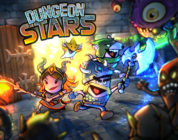In the animal kingdom, there are creatures that are coined “living fossils” referring to creatures that have not if barely, evolved. Animals such as horseshoe crabs and chambered nautilus have remained mostly the same for millions of years and despite everything, staying alive. It can be argued that the shoot-’em up genre of video games, the genre is also a living fossil as well, but that is not at all a bad thing. Shoot ’em-ups have been around for as long as video games have been a mainstay in pop culture. Asteroids, Galaga, and Space Invaders are just a few of the very first ones, as well as the oldest.
Over the span of decades, across thousands upon thousands of titles, the genre has remained the same: Shoot as many enemies as you can, slay the big boss, rack up a high score, and survive. Dairusburst, Freedom Finger, UN Fighter, Philosoma, Ghost Blade HD, I can easily write over a hundred articles on these and many other games in the genre. They are known for the ability to provide instant action, with simplified controls, incredible visuals, and the euphoric thrill of downing an entire enemy armada, all on your own. Even in 2022, the genre of shmups continues to see new entries, and now The Day We Fought Space by Tursips Trimcatis Studios is stepping into a long, illustrious lineage of fantastic games. After several years of working remotely, and all the challenges The Pandemic has caused, the team is ready to take flight in-game.
The Day We Fought Space is a side-scrolling 2D spaceship shooter being built specifically for mobile devices. Taking place in a cosmic setting greatly inspired by 60s and 70 space sci-fi, players take to their ship to fight the enemies of space. Large ships, robotic snakes, small interceptors, and much more filled the screen. The goal is to save the galaxy, and maybe the universe, one step at a time, and to do so, every single enemy ship must be destroyed.
I took some time to lay the game before speaking with creative director Susan Schaefer. The first thing that struck me was how The Day We Fought Space lived up to its visual ambitions. The game looked and felt like one of the classic sci-fi cartoons I grew up watching on early Cartoon Network, like Space Ghost and the 2003’s Duck Dodgers. Even the imagery looks like a comic book grown to life and animation, and it applies from the starting screen to the game’s various levels. In a spaceship shooter, visuals, and how they present themselves, are important to give players that impression of the world they are fighting in, as well as impressionable moments for the player. I’ve played a variety of shooters, but I haven’t ever played one that looked like The Day We Fought Space. While the game nailed the visuals, the gameplay is what counts in a spaceship shooter, and it’s here that The Day We Fought Space feels familiar and refreshingly new.
The Day We Fought Space shoot-’em up that bills itself as a ” Wreck-’em up.” The primary goal is to annihilate all enemies, but the main mechanic of the game is how you do it. The Day We Fought Space is a physics-based shooter. Using one finger, I can position the ship to any place on the left side of the screen. Using two fingers, I can fire my shots, and adjust their spread. Spreading my fingers allows for a wider shot that is weaker, but covers more ground. My first levels gave me a good, basic shot, and missiles. The first stage showed the ropes of how to play, but within moments, I was already pulled in for a great time.
The level took place on the moon, and immediately, I was engaged with targets both in the air and on the ground. Small crafts, gunships, tanks, the works. It’s slightly overwhelming, but with the quick flick of my right hand, these ships are felled, one by one. As expected, the larger ships can take a few more hits before falling onto the ground. Of course, the bad guys wouldn’t let it go and launched all sorts of shots and homing missiles towards me, but then came a large craft, almost like a train. Here The Day We Fought Space introduced a satisfying aspect to its physics mechanics, and that is gravity. Shooting the transport, which stretched for a significant portion of the screen, had the transport fall and crash to the bottom of the screen. Any enemies below, whether they are flying or on the ground, are caught up in the crash and are subsequently obliterated. This is not only a fantastic way to clear the screen but an excellent way to rack up points, not to mention incredibly satisfying to see. Enemies and explosions fill the screen, and it was a joy to hear the satisfying explosion each time. After fighting an entire armada, and even a boss fight, my level was over.
Following my first level, I was introduced to a hanger, where The Day We Fought Space surprised me further. The ship in The Day We Fought Space is customizable. Players can change the color and design of their ship, but most importantly, they can change their shot. The shot customization is a small hexagonal interface, where certain shots and shot types are compatible with specific spreads and attributes. It’s a simple interface that works well. Playing around with it, I embarked on my next mission, which appeared to be Mars during a Maritan dust storm. There were familiar enemies, but the goal was to test my shot, which was exhilarating. I tried a big bullet shot, with slow but powerful full bullets. On another attempt, I used a flame thrower and even an acid stream. I was able to change the secondary shot a swell, from missiles to chain links. This got a good laugh out of me because the absurdity of throwing 100-foot-long chain links in deep space against aliens was part of the whole charm of the game. After some time, I was ready to speak with Susan Schafer, creative director of The Day We Fought Space.
” We wanted to do something colorful and different” Susan said to me. ” We were inspired by the comic books of the 60s and 70s and wanted to experiment with that as it hadn’t been done before, and to provide something reachable,” Susan explained the little touches of the game and how there is a lot more under the hood than what we see. The game features several accessibility options for players and is at its core, designed to be reachable to players of all skill levels. Hearing this made me rather happy, as the genre is notorious for its difficulty. I’ve played games like Einhander, Gradius III, and R-Type, and in each game, like the many others like it, players needed razor-sharp reflexes and hours upon hours of replay to fully conquer. I even remember using Gameshark when playing RayStorm on my PSOne, because no matter how hard I tried, I was annihilated on Stage 6, before the end of the game. Hearing that there is a degree of reachability and accessibility is not only important but incredibly welcomed for this genre. The Day We Fought Space may position itself for players to approach the many other shoot-’em ups out there, from Rigid Force Redux to Ikaruga and even rail-shooters such as Panzer Dragoon.
The Day We Fought Space is a standout game I played at PAX East. Simple, refreshing, different, and approachable to anyone and everyone with an interest in shoot-’em ups. This women-led team took an established formula and added their own mix to it, creating something I couldn’t wait to play more of, but also a game that makes me excited for others who have yet to play. Video games can become a gateway to greater titles, and my earliest memories recall titles like Star Fox being the game that got me into games. I feel that the Day We Fought Space will be that too, and that is remarkably special.
The Day We Fought Space is slated for launch on May 26th, 2022 for iOS platforms, with the potential for future platform launches to be considered.








